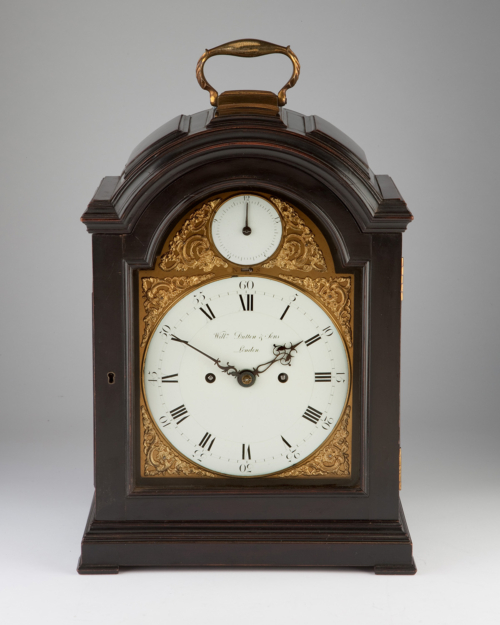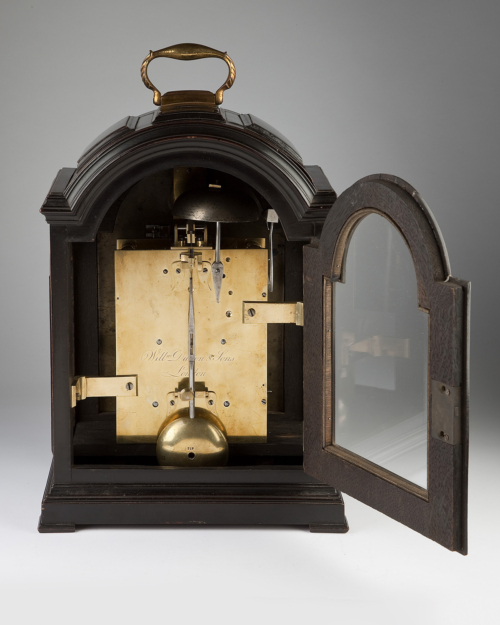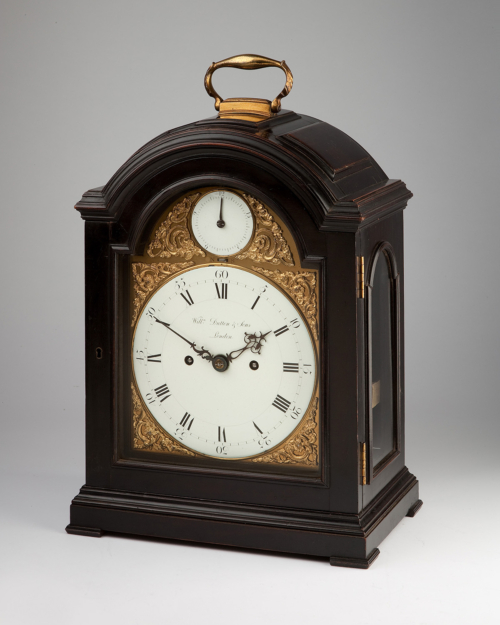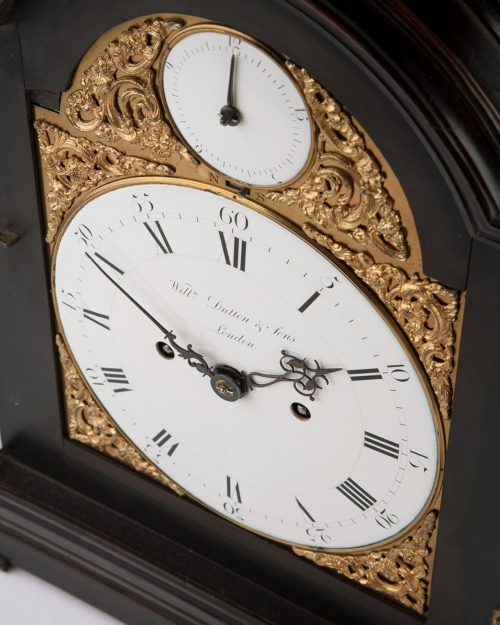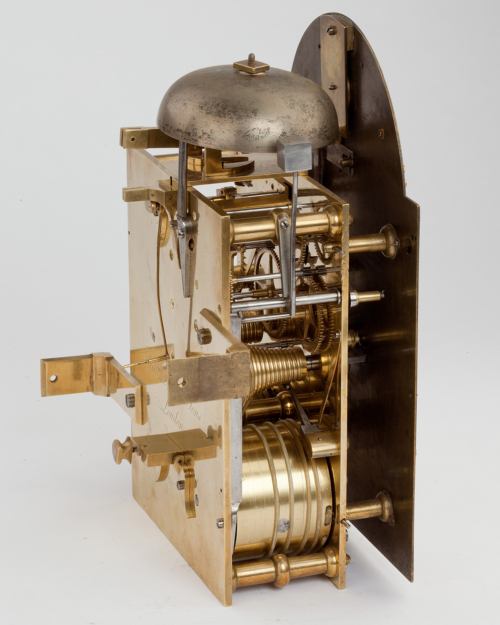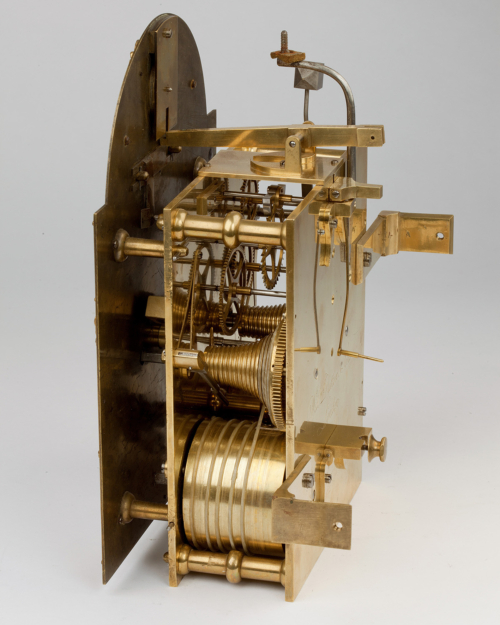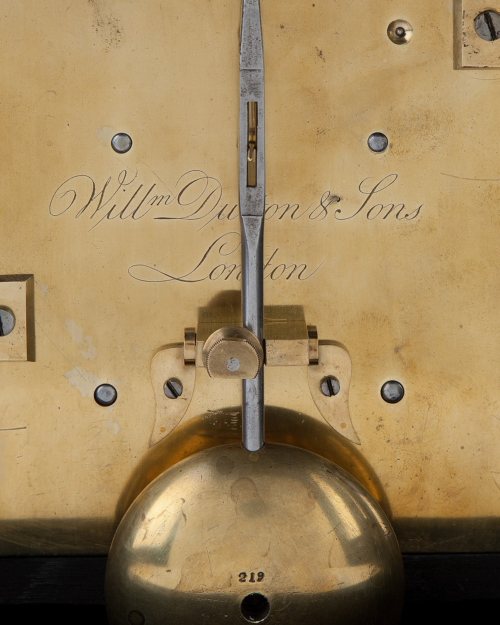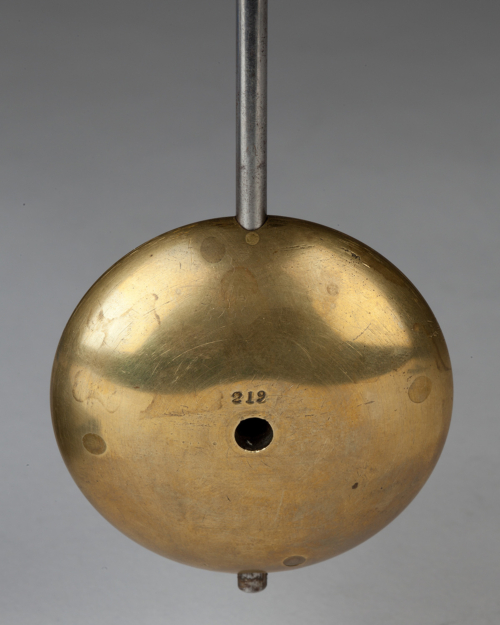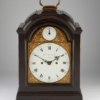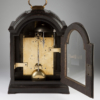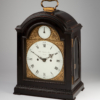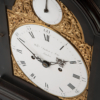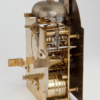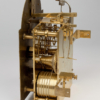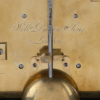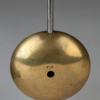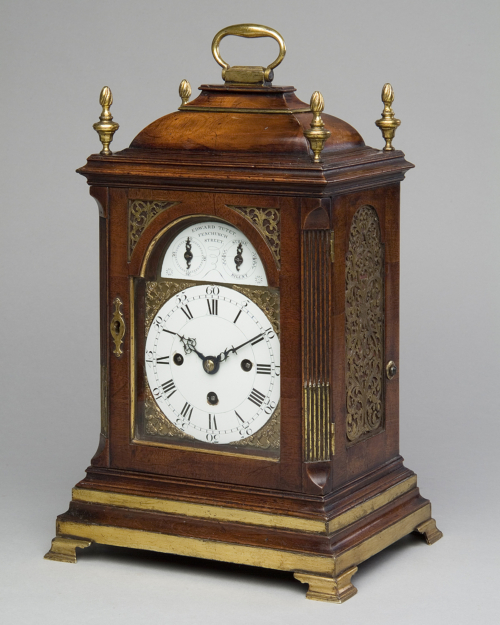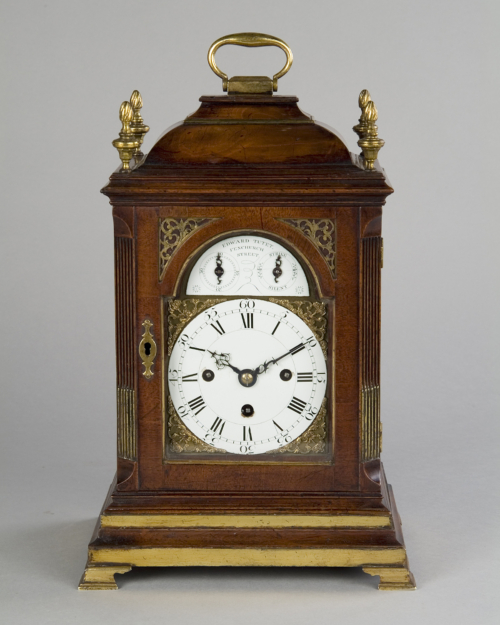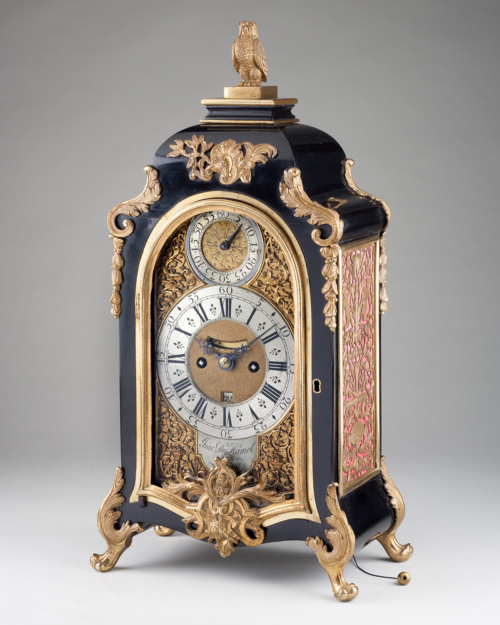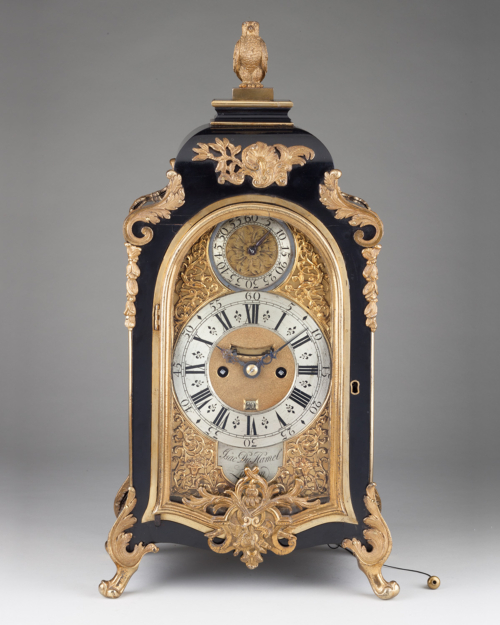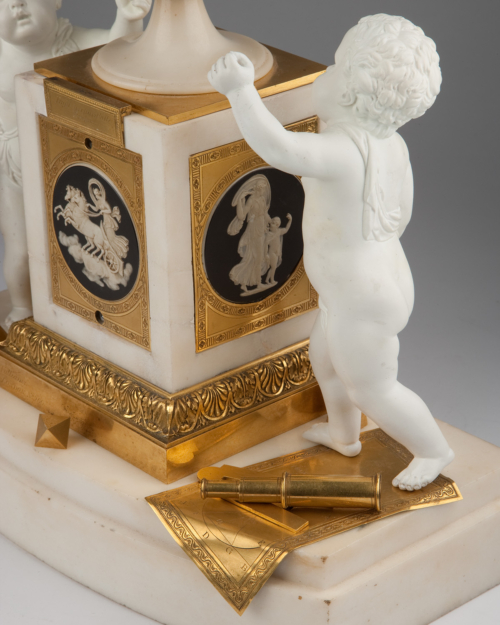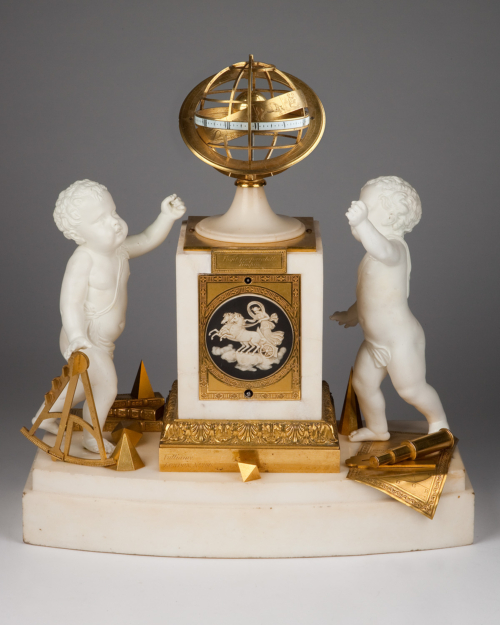| Case | The well-proportioned ebonised breakarch case has a triple pad top surmounted by a folding flamed carrying handle with curved base. The doors and sides with raised beakarch mouldings to the glazed apertures. The skirting with moulded block feet. |
| Dial | 7 by 5½ inch gilt-brass breakarch dial with a large white vitreous enamel chapter disc signed Willm. Dutton & Sons London with Roman and Arabic chapters and well-pierced blued steel hands. Finely cast gilt foliate spandrels to the angles and the arch, which is centred by an enamel rise-and-fall disc calibrated 1-12. |
| Movement | High-quality movement with five robust pillars, twin fusees and spring barrels with gut lines. The going train with half deadbeat escapement and heavy steel-rod pendulum punch-numbered 219, typical Dutton pendulum lock that folds flush to the backplate. The pendulum suspended from a rise-and-fall bar bridging the plates. The hours are struck on a single bell and the backplate is signed Willm Dutton & Sons London. |
| Duration | 8 days |
| Provenance | Private collection UK |
William Dutton & Sons, London Circa 1795
A handsome ebonised striking table clock with triple pad top case and true enamel dials
£22,000
William Dutton was born in 1722 in the village of Marsden in Buckinghamshire. In 1738 he was apprenticed to George Graham (d. 1751) and made Free in 1746. In 1755 Dutton joined forces with Thomas Mudge (1715-1794), another apprentice from the Graham workshops, this partnership proved particularly successful and together they made some of the most outstanding clocks of the latter 18th Century.
The Duttons produced this style of table in three models; the least expensive with one-piece silvered brass dials, followed by muti-piece dials with chapter rings and spandrels, the most expensive model had highly-prized vitreous enamel dials – as no.219.
Product Description
William Dutton was born in 1722 in the village of Marsden in Buckinghamshire. In 1738 he was apprenticed to George Graham (d. 1751) and made Free in 1746. In 1755 Dutton joined forces with Thomas Mudge (1715-1794), another apprentice from the Graham workshops, this partnership proved particularly successful and together they made some of the most outstanding clocks of the latter 18th Century.
The Duttons produced this style of table in three models; the least expensive with one-piece silvered brass dials, followed by muti-piece dials with chapter rings and spandrels, the most expensive model had highly-prized vitreous enamel dials – as no.219.
Additional information
| Dimensions | 5827373 cm |
|---|

